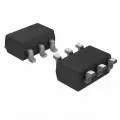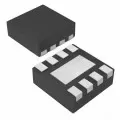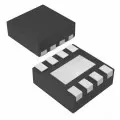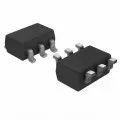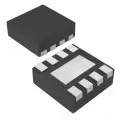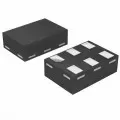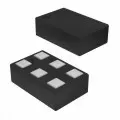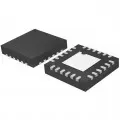OUTLINE:
What is RF Amplifier? Function, Types& Circuit Design
 498
498A vital part of many communication systems radio frequency (RF) amplifiers improve the strength and quality of the signals they receive. To shed light on the function underlying theories and design of RF amplifiers this article will define them precisely. We will acquire a thorough grasp of these essential components by providing an answer to the question of what is an RF amplifier and exploring the intricacies of their functioning. We will learn how RF amplifiers contribute to the effectiveness and efficiency of contemporary communication technologies from their basic function to the subtleties of their design.
Ensuring the clear and efficient transmission of signals is crucial in modern communication. The Radio Frequency (RF) amplifier is the central component of this operation. What exactly is an RF amplifier though? This article will thoroughly understand these essential parts, answering important questions like what an RF amplifier does and how it operates. Specialized electronic devices called radio frequency amplifiers (RF amplifiers) are used in various applications such as satellite communication radar and broadcasting. They are designed to increase the strength of radio frequency signals. Knowing how an RF amplifier works entails realizing how it contributes to signal power enhancement which affects the transmitted signals clarity and range.
This article will give a thorough introduction to these important devices by examining the answers to queries like What is an RF amplifier? and What is the function of an RF amplifier? The principles of operation and design considerations that make RF amplifiers essential for improving communication system performance will also be covered.
What is RF Amplifier
An electrical device intended to amplify signals in the radio frequency range—generally 20 kHz to 300 GHz—is called an RF amplifier. These amplifiers are crucial components of many communication systems because they increase the RF signal strength enabling higher-quality longer-distance transmissions while maintaining signal integrity.
Applications like these require the use of RF amplifiers:
- Increasing the radio and television broadcast signals power is known as broadcasting.
- Telecommunications: Increasing the strength of the signals in satellite communications base stations and mobile phones.
- Radar: In radar systems signals are amplified to improve detection and ranging abilities.
- Medical Devices: RF-signaling-based imaging and diagnostic apparatus.
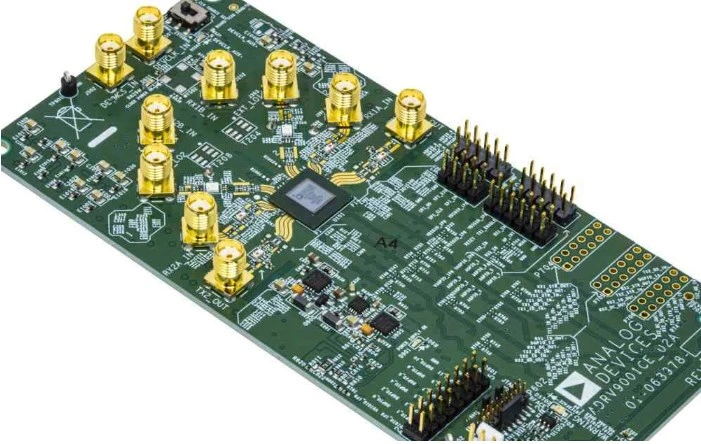
Function of RF Amplifier
By carrying out several essential tasks an RF amplifier significantly improves the efficiency and dependability of communication systems.
- Increasing the power level of weak radio signals is the main purpose of an RF amplifier. The signal can traverse greater distances and pass through obstructions thanks to this amplification process without suffering an appreciable loss in strength or quality.
- Impedance Matching: RF amplifiers assist in balancing the impedance of a communication system's various stages. By minimizing signal reflections which can lower signal quality proper impedance matching maximizes power transfer.
- Noise Reduction: When amplifying a signal high-quality RF amplifiers are made to add as little noise as possible. These amplifiers guarantee more dependable and clear communication by raising the signal-to-noise ratio, particularly in areas with high electromagnetic interference.
- Linear Amplification: Preserving the amplified signals' linearity is crucial to avoiding distortion. With the original characteristics of the input signal such as phase and frequency preserved RF amplifiers make sure that the output signal is an accurate reproduction of the input signal.
- Signal power is increased by RF amplifiers in many applications including satellite communications and broadcasting to achieve the necessary transmission levels. The transmission of the signal over long distances and clear reception by the intended recipient are guaranteed by this power boost.
- Selective amplification that maximizes the desired signal while reducing the impact of undesirable frequencies or interference is achieved by certain RF amplifiers that are built to operate within particular frequency ranges.
Types of RF Amplifier
There are many different kinds of radio frequency amplifiers and each one is made for a particular purpose and use in the radio frequency communication industry. These are a few of the most popular kinds of radio frequency amplifiers.
Amplifier with Low Noise (LNA): Reduces the quantity of noise that is amplified into the signal. Signal-to-noise ratio (SNR) enhancement at the front end of receivers is a crucial function for sensitive applications like radio astronomy and satellite receivers.
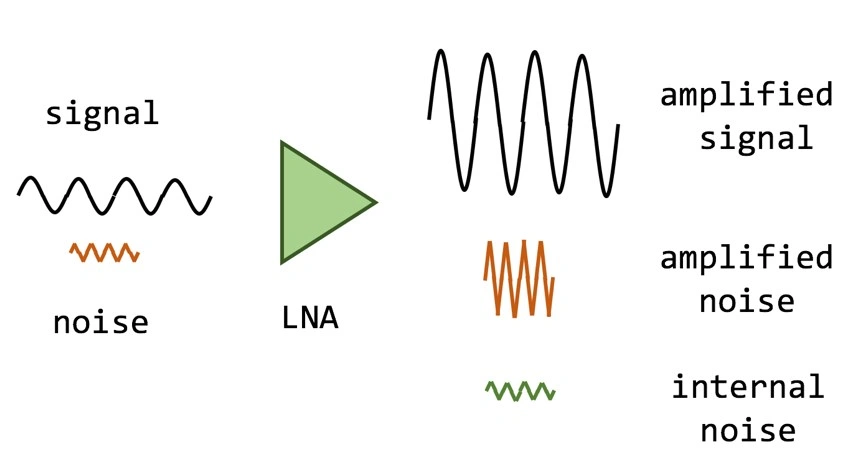
A Power Amplifier (PA): Boost the signal's strength so that it can drive a load or antenna. Found in transmitters for high-power uses such as radar telecommunications and broadcasting.
A linear amplifier: Maintain a linear relationship between the input and output signals while providing amplification with the least amount of distortion. In communication systems that demand high-fidelity signal transmission for example or in applications where signal integrity is crucial.
Broadband Enhancer: The goal is to enhance signals across a broad frequency spectrum. Use: Well suited for wideband communication systems instrumentation and cable television systems among other applications requiring a large bandwidth.
The VGA stands for variable gain amplifier Goal: To enable the gain to be adjusted to account for different signal strengths. Use: In circuits for automatic gain control (AGC) in receivers among other systems that need to make dynamic range modifications.
An amplifier for buffers: The goal is to isolate various circuit stages to avoid interference and signal deterioration. Use: To maintain steady operation oscillators and signal generation systems employ this.
Amplifier Driver: Ensure that the last power amplifier stage receives enough drive. Application: They are frequently employed in multi-stage amplifier systems to drive the input of a higher-power amplifier stage.
A dispersed amplifier: Goal: Wideband amplification is accomplished by using several amplifying elements spaced out along a transmission line. Use: Suitable for uses where a large bandwidth and high gain are needed like RF and microwave communication systems.
Class A Power Supply: The goal is to provide high linearity by operating in a mode where the active device conducts the full input signal cycle. Use: In high-fidelity audio systems and laboratory apparatus for example where signal purity is crucial even at the expense of reduced efficiency.
Class A and Class B Amplifiers: The active device should only conduct for a portion of the input signal cycle (Class B for half of the cycle and Class AB for more than half but less than the full cycle) to increase efficiency. Application: Frequently utilized in radiofrequency transmitters with balanced efficiency and linearity appropriate for communication transmitters and audio amplifiers.
An amplifier in class C: Goal: Usually utilized for high-frequency operations this method provides high efficiency by conducting for less than half of the input signal cycle. Application: Widely utilized in RF transmitters where linearity is not as important as efficiency like in RF power amplification for communication and broadcast systems.
Class D and Class E Amplifiers: Goal: Work at extremely high efficiency by employing switching techniques. Use: Fit for uses where high-efficiency amplification is needed like RF power amplifiers in digital communication systems.
RF Amplifier Circuit Composition Design
To achieve peak performance the design of an RF amplifier must take into account several important factors. The active element of an RF amplifier is usually a transistor such as a Field Effect Transistor (FET) or Bipolar Junction Transistor (BJT) selected for their efficient signal amplification capabilities.
Vacuum tubes are less common in contemporary designs but they may be used in certain high-power applications. The biasing network comprising capacitors and resistors is used to set the proper DC operating point of the active device and guarantee that it operates within the proper region of its characteristic curves.
RF amplifier design also requires careful consideration of impedance matching. Input and output matching networks are used to accomplish this making sure that the load and the amplifiers input and output impedances respectively match. Power transfer is maximized and signal reflections that can impair performance are minimized with proper impedance matching.
To prevent DC bias interference and ensure that the various stages of the amplifier circuit operate as intended, coupling capacitors are used to block DC components while allowing AC signals to flow from one stage to another.
Decoupling capacitors are also used to reduce unwanted noise and stabilize the power supply to the active component resulting in reliable operation.
For impedance-matching filtering and tuning, inductors and transformers are frequently used in RF amplifier circuits, particularly in RF and microwave applications. By feeding a portion of the output signal back to the input a feedback network can also be used to provide stability and control gain. For oscillation in oscillator circuits, this feedback can be either positive or negative (for stability).
The frequency range gain linearity and noise figure are design factors for radio frequency amplifiers. Taking into account aspects like gain bandwidth and stability the amplifier must be built to function well within the intended frequency range. Calculating the necessary gain expressed in decibels (dB) is essential to guarantee that there is enough amplification without creating instability or excessive noise.
In communication systems where signal integrity is crucial linearity is especially necessary to prevent signal distortion. Enhancing the overall signal-to-noise ratio by reducing amplifier noise is crucial, particularly for low-noise amplifiers utilized in delicate applications such as radio astronomy receivers and satellites.
RF amplifiers are essential in today’s electronic communication systems because of these factors and considerations that work together to ensure that they satisfy the unique requirements of diverse applications.
Choosing the right RF Amplifier
Selecting the ideal RF amplifier requires taking into account several important aspects to make sure it will fulfill the demands of your application. Since different amplifiers are optimized for different frequency bands, first ascertain the range of frequencies within which the amplifier must function. >>Top 10 RF Amplifier Manufacturers Worldwide In 2024
After that determine the necessary gain and make sure the amplifier can amplify the signal enough without creating too much noise or instability. To prevent distortion linearity is essential in applications where signal integrity is critical like communication systems.
To make sure the amplifier adds little noise and keeps the signal-to-noise ratio high take into account the noise figure as well particularly for low-noise applications. In addition, there are impedance-matching capabilities, efficiency, and power output. You may choose an RF amplifier that improves performance and dependability in your particular application by carefully weighing these factors.
If you want to buy a radio frequency amplifier at a good price, I recommend buying it on the chipsmall platform, which allows you to buy a high quality RF amplifier at a good price.

Conclusion
In conclusion, we learned what an RF amplifier is, functions and its types. RF amplifiers are essential parts of contemporary communication systems because they help with noise reduction, impedance matching, and signal amplification. Choosing the appropriate RF amplifier for a task is made easier by having a thorough understanding of the different types of RF amplifiers from low noise to power amplifiers and their unique applications. Frequency range gain linearity and noise figure are important factors to take into account when designing RF amplifiers because they all guarantee top performance and dependability. Engineers and designers can strategically employ RF amplifiers to improve the functionality and efficiency of communication systems by having a thorough understanding of these components.

Disclaimer: The views and opinions expressed by individual authors or forum participants on this website do not represent the views and opinions of Chipsmall, nor do they represent Chipsmall's official policy.

share this blog to:


